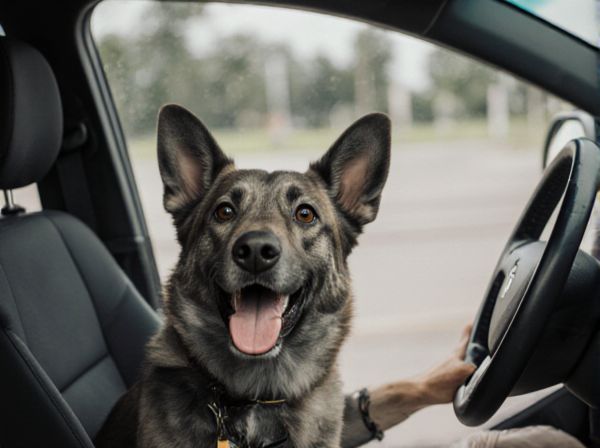
Photo illustration: Dog engagement vs Synchromesh
Dog engagement gears offer quick, positive gear shifts with minimal power loss, making them ideal for high-performance or racing transmissions. Synchromesh systems use synchronizer rings to smooth gear changes by matching gear speeds, enhancing driving comfort and reducing wear. Your choice depends on whether you prioritize aggressive shifting precision or smoother, easier gear changes in everyday driving.
Table of Comparison
| Feature | Dog Engagement | Synchromesh |
|---|---|---|
| Function | Direct gear engagement via dog teeth | Smooth gear change via synchronizer rings |
| Shift Smoothness | Harsh, requires precise timing | Smooth, minimizes gear clash |
| Durability | Highly durable under heavy loads | Moderate, subject to wear on synchronizers |
| Use Case | Racing, performance, heavy-duty trucks | Passenger cars, everyday use |
| Maintenance | Low, simpler design | Higher, synchronizers require replacement |
| Cost | Lower manufacturing cost | Higher due to complex components |
| Gear Engagement Speed | Faster engagement, minimal delay | Slower engagement due to synchronization |
Introduction to Dog Engagement and Synchromesh
Dog engagement and synchromesh systems are critical components in manual transmissions, designed to facilitate smooth gear changes and power transfer. Dog engagement uses rigid, interlocking teeth to connect gears directly, enabling rapid shifts but requiring precise timing to avoid gear clash. Synchromesh mechanisms employ synchronizer rings to match gear speeds before engagement, ensuring quieter and smoother gear transitions for enhanced drivability.
Basic Mechanisms: How Each System Works
Dog engagement utilizes solid, interlocking teeth on the gear and the hub that mesh directly to transfer torque, ensuring a positive, non-slip connection ideal for high-performance or racing transmissions. Synchromesh relies on synchronizer rings that match gear speeds through friction before engagement, allowing smooth and quiet shifting by gradually meshing the gears without grinding. Both systems serve to connect gears in a transmission, but dog engagement prioritizes durability and speed of engagement while synchromesh emphasizes noise reduction and ease of shifting.
Key Differences Between Dog Engagement and Synchromesh
Dog engagement uses interlocking teeth to achieve direct mechanical connection between gears, providing rapid, robust shifting primarily favored in racing or heavy-duty applications. Synchromesh systems incorporate synchronizer rings that equalize gear speeds before engagement, ensuring smoother and quieter gear transitions ideal for everyday driving. Key differences include noise levels, shift smoothness, wear tolerance, and typical usage environments, with dog engagement offering faster shifts and higher durability at the cost of increased noise and potential wear compared to synchromesh.
Application Areas: Where Each is Used
Dog engagement mechanisms are primarily used in racing cars, motorcycles, and heavy machinery where rapid gear changes and durability under high load are critical. Synchromesh systems dominate in passenger vehicles like sedans and SUVs, providing smooth, quiet gear transitions ideal for everyday driving conditions. Industrial and commercial vehicles benefit from synchromesh for ease of use, while dog engagement excels in performance and off-road applications requiring quick and aggressive shifting.
Performance Impact: Speed and Efficiency
Dog engagement transmissions provide rapid gear shifts with minimal power loss due to direct mechanical locking, enhancing speed and overall drivetrain efficiency during high-performance driving. Synchromesh systems rely on synchronizer rings to match gear speeds, which smooths gear changes but can introduce slight delays and friction, marginally reducing shifting speed and efficiency. Consequently, dog engagement is preferred in racing applications for maximum speed and minimal energy loss, while synchromesh suits everyday driving where smoother transitions are prioritized.
Durability and Maintenance Considerations
Dog engagement systems exhibit superior durability due to their robust metal interlocking teeth that provide positive drive engagement, minimizing wear under heavy loads. Synchromesh mechanisms rely on frictional synchronizers to match gear speeds, which can lead to higher maintenance requirements as clutch components and synchronizer rings wear over time. For operators prioritizing long-term reliability with less frequent maintenance, dog engagement offers a more resilient solution compared to the wear-prone components in synchromesh transmissions.
User Experience: Shifting Feel and Usability
Dog engagement transmissions provide a direct, positive gear lock-up offering a crisp, mechanical shifting feel that appeals to drivers seeking precise control. Synchromesh systems deliver smoother, quieter shifts by synchronizing gear speeds before engagement, enhancing usability for everyday driving with reduced effort and noise. User experience varies as dog engagement enables quicker, more aggressive changes ideal for performance contexts, while synchromesh prioritizes comfort and ease, minimizing gear clash and driver fatigue.
Advantages of Dog Engagement Transmissions
Dog engagement transmissions offer faster and more positive gear shifts compared to synchromesh systems due to their direct mechanical lock without relying on friction. They excel in high-performance and racing applications by enabling quicker gear changes under heavy load conditions, reducing wear and minimizing shift times. The robust design of dog engagements also enhances durability and reliability in demanding environments where synchromesh components might fail or degrade.
Benefits of Synchromesh Systems
Synchromesh systems provide smoother and more precise gear shifts by synchronizing the rotational speeds of gears before engagement, reducing wear and increasing transmission longevity. Unlike dog engagement, which allows rapid shifts but can cause gear clash and increased noise, synchromesh enhances driver comfort and vehicle control. This technology is especially beneficial in everyday driving scenarios, improving overall drivetrain efficiency and reliability.
Conclusion: Choosing the Right System for Your Needs
Dog engagement transmissions offer robust strength and quick gear shifts, ideal for high-performance and heavy-duty applications, while synchromesh systems provide smoother and quieter gear changes, enhancing everyday driving comfort. Selecting the right transmission depends on your priorities: dog engagement suits motorsport or rugged use with rapid engagement demands, whereas synchromesh is better for standard vehicles focusing on ease and reliability. Evaluating your driving style, vehicle type, and maintenance capabilities ensures optimal performance and satisfaction with either system.
 caratoz.com
caratoz.com